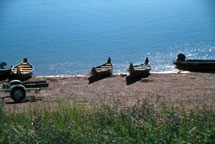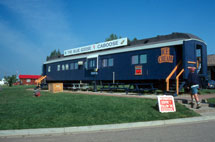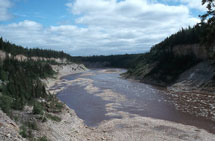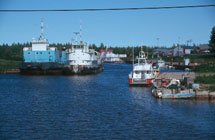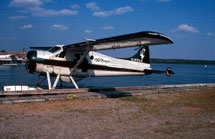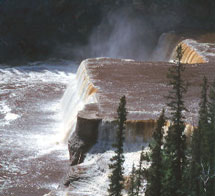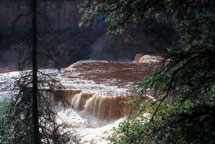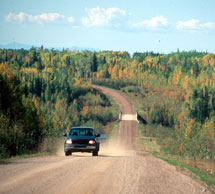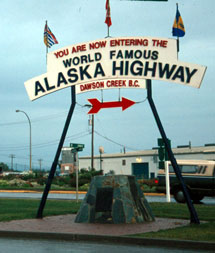|
From Rivers to Roads: A Short History |
|
Most of today’s commerce in the north is conducted by aircraft, road vehicles and locomotives. But not all of it. Tons of freight is still shipped by river every summer. It’s a lingering reminder that roads are relative newcomers in Canada’s north. Today’s motorists drive roads that cling to the same rivers traveled by the early inhabitants and explorers. The highways are tied to a history that spans an extensive period of time – from the echoes of the distant past to the promise of the future.
|
|
5. Gold Fever |
| The First Peoples: |
|
Mountain Dene, South Slavey, Beaver, Chipewyan and Dogrib, Carrier and Sekani are some of the Dene that are encountered on the route today. Cree people, too, now reside along parts of the Deh Cho Travel Connection. For centuries, birch bark and spruce canoes silently plied the northern waters and mountain peoples rode the wild rivers in moose hide boats. |
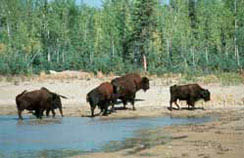 The vast land
of the Deh Cho Travel Connection has been home to people
for thousands of years. The First Peoples probably wandered into northern
British Columbia and the Mackenzie Valley after the last ice age more than
10,000 years ago. The Fort Liard (NWT) and Fort St. John (BC) areas
contain some of the oldest prehistoric sites found in North America.
The vast land
of the Deh Cho Travel Connection has been home to people
for thousands of years. The First Peoples probably wandered into northern
British Columbia and the Mackenzie Valley after the last ice age more than
10,000 years ago. The Fort Liard (NWT) and Fort St. John (BC) areas
contain some of the oldest prehistoric sites found in North America.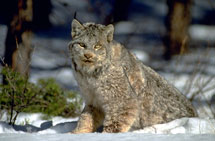 During the last 2,500
years, the direct ancestors of today’s Dene (pronounced DEN-ay, meaning
"people") hunted over the tundra and forest. Moving almost
constantly, they used canoes, toboggans and snowshoes. Caribou, moose and
smaller animals and birds were hunted with bows, spears and snares. Fish
were speared and netted.
During the last 2,500
years, the direct ancestors of today’s Dene (pronounced DEN-ay, meaning
"people") hunted over the tundra and forest. Moving almost
constantly, they used canoes, toboggans and snowshoes. Caribou, moose and
smaller animals and birds were hunted with bows, spears and snares. Fish
were speared and netted.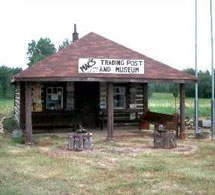 With the
coming of the white man, the rivers became the sole link from the south to
the rich resources of the north. Starting in the 18th century,
the fur traders thrust north, first using the legendary voyageur canoes
and later the cumbersome York boats.
With the
coming of the white man, the rivers became the sole link from the south to
the rich resources of the north. Starting in the 18th century,
the fur traders thrust north, first using the legendary voyageur canoes
and later the cumbersome York boats.